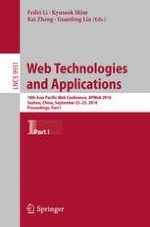This LNCS double volume LNCS 9931-9932 constitutes the refereed proceedings of the 18th Asia-Pacific Conference APWeb 2016 held in Suzhou, China, in September 2016.
The 79 full papers and presented together with 24 short papers and 17 demo papers were carefully reviewed and selected from 215 submissions.
the focus of the conference was on following subjects: Spatio-temporal, Textual and Multimedia Data Management
Social Media Data Analysis
Modelling and Learning with Big Data
Streaming and Real-time Data Analysis
Recommendation System
Data Quality and Privacy
Query Optimization and Scalable Data Processing
